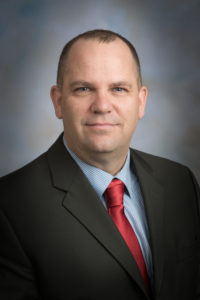

A faculty member and a graduate research assistant from Colorado State University’s Department of Construction Management, along with a faculty member from the Department of Economics were recently named as recipients of a 2022 Sustainability Curriculum Innovation grant. The Sustainability Curriculum Innovation Grants are funded by a partnership between CSU’s School of Global Environmental Studies (SoGES) and the President’s Sustainability Commission (PSC).
John Killingsworth, assistant professor in the Department of Construction Management, Zachary Schaller, assistant professor in the Department of Economics, and Katie Bond, graduate research assistant in the Department of Construction Management, will develop a new course with the theme of circular economics and construction.

Project: circular economics for the built environment
The built environment, e.g., homes, commercial buildings, infrastructure, and the process of creating it consumes the most energy and produces the most waste of any other industry. The emerging discipline of “circular economics” can be a useful tool in tackling these sustainability impacts, since it addresses systemic challenges such as climate change, waste, natural resource management, supply-chain management, and pollution.
This project will develop a new course at CSU, the first of its kind, to feature circular economics as a guiding theme. Through a research-based teaching methodology, the new course, Circular Economics in the Built Environment, will provide students across disciplines with transformative training on sustainable systems for the built environment.
Our current economic model is linear – we extract materials, use them, and then discard them: take, make, waste. Circular economics (CE) is a systems thinking approach to environmental sustainability. It seeks to create regenerative systems that eliminate waste altogether. CE decouples economic activity from the consumption of resources and builds systemic resilience. This regenerative approach benefits business, people, and the environment.
The current most common approach to environmental sustainability in the built environment is to use a building rating system like LEED or Green Globes to achieve an individual building or project that meets sustainability standards. While excellent, these rating systems do not address the systemic change required to achieve circularity and long-term environmental sustainability.
How the research informs ‘sustainability impacts’ on the built environment
Circular economics in the built environment is an emerging field. The case studies will help students and researchers define metrics for measuring the circularity of a project. Achieving circularity is an iterative process that involves the expertise of several disciplines: construction, business, architecture, economics, public policy, and others.
According to Schaller, “We innovate in two ways. First, students will dive into experiential learning using case studies of current construction projects. They will execute plan reviews that will give them practice with real-world analysis while also learning about the research process and how our understanding of circular economics is evolving. Second, students will be exposed to the incentive problems and systemic challenges that limit progress toward circularity.”
About the Sustainability Curriculum Innovation Grants
Future professionals will both affect and be affected by sustainability’s global grand challenges, no matter their vocation. It is CSU’s ultimate goal that all graduating students understand and appreciate the complex and interconnected sustainability concepts that define our global future.
The Sustainability Curriculum Innovation Grants develop existing and new coursework that offer creative approaches to interdisciplinary sustainability content, and elevate both the quality and quantity of student exposure to complex sustainability concepts.
The grants also facilitate initial development of a sustainability curriculum toolkit for campus, which will provide a mechanism to share expertise and tools across colleges and courses. Future leaders need such interdisciplinary training to root their understanding of sustainable systems and implement new solutions.
By the year 2050, two-thirds of the global population is projected to live in cities. Students will have an opportunity to learn how to shape that environment in a way that is healthy and sustainable for people, business, and the environment.
The Department of Construction Management is part of CSU’s College of Health and Human Sciences.